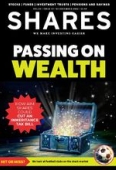Archived article
Please note that tax, investment, pension and ISA rules can change and the information and any views contained in this article may now be inaccurate.
Does FTX’s collapse mean the cryptocurrency bubble is about to burst?

Lurid stories continue to emerge as the courts, regulators and creditors continue to sift the wreckage of the FTX cryptocurrency exchange, its trading and research arm Alameda and the financial affairs and reputation of their founder Sam Bankman-Fried.
Three crushing ironies are apparent:
1. FTX ultimately failed because the world’s leading crypto platform, Binance, lost confidence in it and pulled out its assets. This is hardly a glowing endorsement of cryptos, stablecoins and digital tokens.
2. FTX then tried to bail itself out by raising $8 billion in fiat currency, the very sort of money that cryptocurrency supporters were trying to eschew in the first place.
3. Once an investor puts cash in the bank, the bank invests that cash and treats it as a liability on its balance sheet. Once an investor puts crypto onto a platform, the exchange owes that digital currency to the investor and may trade or lend or leverage it accordingly. Neither the bank nor the crypto platform can meet mass withdrawals – a ‘run’ – so crypto fans have simply found the same risk in different form, and an unregulated version of it for good measure.
The key issue now is what happens next, and what are the implications for the crypto asset class and financial markets more widely?
Manias, panics and crashes
Bitcoin has lost a fifth of its value since news of FTX’s financial troubles first broke, yet it could have been worse. This column assumes the fall-out in equity and bond markets would be much greater if the world’s fifth-largest investment bank or investment platform were to fail. Some may therefore treat bitcoin’s price resilience with suspicion rather than approbation.
However, bitcoin has lost three-quarters of its value since the November 2021 peak, just shy of $68,000.
This will tempt sceptics to argue that the crypto bubble is starting to go pop, especially as the asset class’s trajectory closely follows that outlined by Charles P. Kindleberger in his magisterial study of similar episodes, Manias, Panics & Crashes. The details may change from mania to mania, but human behaviour clearly does not, and the running order feels consistent:
• The starting point for a bubble is a new investment opportunity, one that may be genuine or even one with just a big enough grain of truth to be irresistible to those looking for a quick financial killing.
• Initial price rises then catch the attention of newcomers, as ‘fear of missing out’ starts to gather.
• Investing and operational profits go into orbit and fresh cash is attracted, often in the form of borrowed cash.
• More copycats and imitators spring up and more credit is made available as asset prices keep running and the profits keep flowing.
• Then the trouble starts. Insiders start to lock in their profits by selling to the unwary at elevated prices and leave investors holding the bag. Prices initially correct but then rally as loyal supporters buy on the dips.
• Initial signs of distress then start to sow real seeds of doubt. A new offering goes wrong, a firm runs out of cash and asset prices fail to reach their previous peaks. The queue of copycat flotations and management teams looking to sell their stock on a secondary basis gets longer by the minute and supply begins to outstrip demand.
• Then comes a good, old-fashioned scandal. Someone goes bust or accounts prove to be crooked, or someone runs off with the money, and investors realise they have been had.
• Fear and revulsion replace greed, asset prices collapse as investors scramble to cut their losses and the recriminations begin as scapegoats are sought and publicly pilloried.
Investors can judge for themselves where they feel cryptocurrencies stand in this cycle, assuming they accept the view the cryptos did indeed enter bubble territory in the first place.
Echoes of history
If Kindleberger’s model holds firm, there could be more bad news to come, especially if central banks stay the course, and keep hiking rates, to take away at least a chunk of the cheap liquidity that did so much to fuel interest in crypto in the first place.
As interest rates rise, and quantitative easing is being slowly withdrawn, the cost of money, and returns on cash, are going up. This may force markets to treat money with more reverence and take less risk.
This could have implications for other, potentially bubbly assets, including equities, bonds, property, art, wine, sports cars and thoroughbred racehorses. All have seen some meteoric price increases during the era of zero interest rates and quantitative easing, and some are already rapidly retreating, as we can see in more speculative areas of the stock markets, such as initial public offerings (IPOs) and special purpose acquisition companies, also known as SPACs.
If there is any good news, it is that the aggregate crypto market value is just $825 billion, down from a peak of $3 trillion according to the website coinmarketcap.com. If regulators just leave crypto alone, in the view it will go to zero all by itself, that will equate to the loss of just 2.5% of the American S&P 500 stock index. That should not be enough to destabilise anything, although that may depend upon how much money has been borrowed using cryptos as collateral.
Important information:
These articles are provided by Shares magazine which is published by AJ Bell Media, a part of AJ Bell. Shares is not written by AJ Bell.
Shares is provided for your general information and use and is not a personal recommendation to invest. It is not intended to be relied upon by you in making or not making any investment decisions. The investments referred to in these articles will not be suitable for all investors. If in doubt please seek appropriate independent financial advice.
Investors acting on the information in these articles do so at their own risk and AJ Bell Media and its staff do not accept liability for losses suffered by investors as a result of their investment decisions.
Issue contents
Feature
Great Ideas
News
- New life sciences investment company seeks to take advantage of depressed UK valuations
- Find out what China’s protests and latest Covid plans mean for stocks
- Why no-frills Costco Wholesale continues to flourish
- Retail sector breathes sigh of relief as Black Friday sales top expectations
- Card Factory bucks the negative retail sector trend with share price surge
- Shares in Home REIT are down hard on short-selling report

 magazine
magazine








